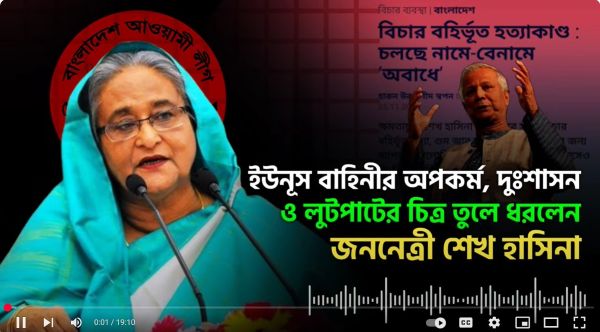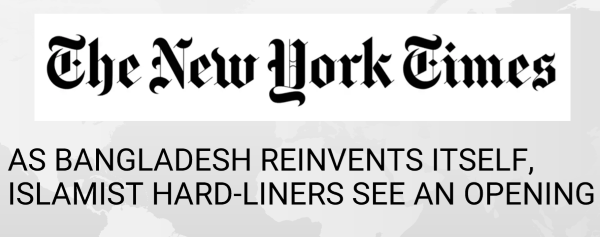
Gender Campus Logo
The end of Sheikh Hasina’s era: Is women leadership in Bangladesh at risk?
“I was getting worried about the situation, so I often had some discussions with my colleagues and friends in Bangladesh over the phone. Through these calls, I could see the fear and uncertainty among all, particularly the working women”.
In September 2024, Gender Campus, a platform dedicated to Gender Studies, Equality, and Diversity at Swiss universities, published a blog post raising concerns about the safety and future of women in Bangladesh. This concern arises in the context of escalating Islamic extremism following the end of Sheikh Hasina’s regime.
A new interim government led by Nobel laureate Professor Dr. Mohammad Yunus has been formed, but they are still struggling to restore law and order. I was getting worried about the situation, so I often had some discussions with my colleagues and friends in Bangladesh over the phone. Through these calls, I could see the fear and uncertainty among all, particularly the working women. This comes to light as videos and images of targeted attacks on sex workers emerge online. In another incident, a man berated and spat at a young woman for not wearing a scarf, while she was sitting in her car. When I talked to my friends from religious and ethnic minority communities, they too relayed that they have been endlessly processing the news of escalating violence- family of friends fleeing for safety, sending reminders to bar doors, checking constantly if any new threats are unfolding for anyone.
Well, there could be several reasons for such incidents, but today I will write about the visible appearance of Islamist ideologies in the public discourses and how or whether that has threatened women's and minorities' rights and gender equality. Last week I visited Geneva for a conference and managed to visit a Bangladeshi restaurant there. The restaurant owner is known to me, we were discussing the political situation in Bangladesh over cha and singara (a popular Bangladeshi snack). He asked me bluntly: will Bangladesh turn to Afghanistan or Syria and be associated with Islamist extremism? I thought to myself, and later I had a detailed talk with my colleague Nooha, who then became interested in co-writing this article. Nooha teaches at BRAC University in Bangladesh and has experienced the uprising in July personally and the subsequent challenges to women’s rights and gender equality.
To write on this, the first question we often see coming from our peers, on social media and in addas (informal conversation) is: are we Bengali or Muslim first? This discussion has been a classical and complicated one. The earlier blog referred to the complexity of the Bengali-Muslim identity and the unique variant of a deltaic Islam these complexities have produced. This identity is a reflection of the syncretic tradition through which Islam evolved into the dominant religion of the population of what is now Bangladesh. Across various disruptive moments in history, Bengalis inhabiting this region have drawn upon the ethnolinguistic (Bengali) and religious (Muslim) components of their identity. In 1947 during the Partition of India after 190 years of the British colonial rule, the Muslim-ness was brought to the forefront. Between 1967 and 1971, the Bengali-ness, vis-a-vis the symbolism of their language, gained more prominence as Bangladeshis fought their Liberation War. After 1975, Islam re-appeared as a political tool. For instance, the 1979 Amendment to the Constitution removed secularism as a core principle and in 1988, Islam was inserted as the state religion. Secularism was then reintroduced in 2011, since the Constitution embraces, rather contradictorily, both secularism as a constitutional principle and Islam as the state religion. This is why this question remains salient in debates about religion and identity to date, and now after the new transition, it seems to be in serious shape!
In general, Bangladesh has several elements that could nurture Islamist extremism. Bangladesh has seen infrequent the presence of several proscribed extremist organisations, such as Hizbut-ut-Tahrir, as well as local chapters of ISIS and Al-Qaeda. Some of these organisations remain active, whilst others have splintered into new groups after being banned. Over the years, news of raids on ‘terrorist dens’ across the country became commonplace, particularly in light of the July 2016 Dhaka Attack, which led to the death of 29 individuals, of whom 17 were foreign nationals.
Many lived with the impression that the Hasina regime had kept these Islamist extremists under control. However, the question remained whether or to what extent Hasina could handle the politicisation of Islam. The Hasina regime violently repressed both Islamist parties and extremist organisations over the past 15 years. For instance, the Jamaat-e-Islami, which had been banned by the Hasina regime and has now been reinstated, is the most prominent Islamist party. Jamaat itself has been troubled by its reputation as a ‘1971 denier’ and for its ranks including war criminals from the 1971 genocide during the independence war of Bangladesh against Pakistan. Nonetheless, they continue to remain a political force to be reckoned with. Hasina made several strategic moves to suppress Islamism whilst also creating specific provisions to cater to their demands. Whilst the 13-point demands of the Hefazat-e-Islam, a far-right conservative advocacy group, was met with force in the 2013 Shapla Chattar incident, leading to the death and injury of many Islamists who had gathered there; the Hasina-led parliament passed a bill in 2018 to recognize the Dawra-e-Hadith (Takmil) degree of Qawmi madrasas (institution for Islamic education) with the status of post-graduate degrees of Islamic Studies and Arabic. Hasina also allocated the maximum budget to build modern mosques and madrasas across the country. These were widely seen as a green signal to Islamists by many critics.
In present-day Bangladesh, a quarter of the 44 political parties registered with the Election Commission are Islamist parties. While these parties have not made a majority in any election thus far, their presence has not been passive. Jamaat-e-Islami’s student wing, the Chhatra Shibir, has been long condemned as a terrorist organisation, carrying out extremist actions on several public university campuses. Since the July uprising, Jamaat has made a prominent return to the political landscape and many of the newer parties are also looking to gain political ground. While these Islamist parties have their ideological differences, it can be expected that they might seek electoral alliances to reach a historic majority. Aside from Jamaat, the parties with political prominence are the four Qawmi madrasa-based parties. This underscores the connection between Islamism and formal academic institutions. Now, the Islamists have leveraged this moment to mobilise. Extremist flags were raised in rallies by college and school students on several occasions recently. In some cases, the heads of several prominent non-madrasa schools were seen leading these rallies.
For us, one of the most troubling issues is this blatant, albeit not new, incorporation of Islamist politics into secular secondary education and the growing attack on academic freedom. Samina Lutfa and Kamrul Hasan, two professors at the University of Dhaka, have been labelled as “Islamophobes” for their progressive views. The national curriculum reform committee which had included Luthfa was dissolved in the face of mounting pressures from Islamist groups. In several universities, female educators from various disciplines have faced such smear campaigns and even lost their jobs. Unlike the male educators participating in rallies holding an extremist flag, female educators have been put under the microscope and scrutinised harshly by many camps.
Bangladesh Mahila Parishad, a women’s organisation, reported a 27% uptick in violence against women in September alone. Many of our students in Bangladesh are writing about carrying sharp objects and homemade pepper sprays for their safety. Even more pathetically, many women are reporting that they carry extra layers to keep themselves more covered, lest they face some kind of harassment. In the past, Islamist groups have made calls to curtail women’s presence in public and enforce the hijab on them. There are also calls to denounce and deny gender minorities, who are also facing harsher scrutiny and escalated violence since July. These sentiments appear to be on full display as the law and order situation in the country remains in shambles. We feel angered and disheartened by this sweeping exclusionary sentiment which is sidelining the contribution of women and gender minorities during the uprising. Conversations among our friends and colleagues in Bangladesh have turned into planning around safety during their regular commutes, contemplating how to teach topics like feminism and gender in classrooms, and constantly keeping a pulse on the situation.
Seeing social media flooded with images and videos of these become commonplace. The places of worship and residences of Hindus, Buddhists and Christians have been attacked and torched across Bangladesh. Indigenous populations in the Chittagong Hill Tracts have faced communal violence at the hands of Bengali Muslim settlers in the past month. The conflict among Muslims themselves is to be noted: salafists (Orthodox sunni Muslim) have attacked and damaged shrines across Bangladesh and threatened Sufi leaders- pirs and fakirs.
Despite this bleak picture, we observe that there is greater visibility of injustice, perhaps in reaction to the various extremes that people have experienced. Different rights groups also work tirelessly to bring communal and social injustices to light. There are concerted efforts by feminist groups working outside the NGO structure to regain peace and equality. The seismic shifts that could be observed in the uprising have spilt over to efforts based on community organising, decentralised demands for accountability and heightened awareness of the power of the people.
Now question remains- will this be enough to bring gender equality, justice and communal harmony among the people or will the divisive forces win in the end? (Source: Blog posted on Women Campus, co-authored by Dr. Jinat Hossain, a researcher at the University of Zurich and a part-time lecturer at the University of Bern and Nooha Sabanta Maula, Lecturer at the School of General Education, BRAC University in Dhaka)



